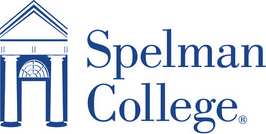Award Procedures
The Financial Aid Award Process at Spelman
It's important for you to fully understand the kinds of awards that are possible at Spelman and to understand how to read your financial aid offer letter. Once you enroll in classes each semester, your financial aid awards become disbursements which are applied to the charges on your student account each semester. The disbursement of your funds is contingent on you meeting specific requirements, including appropriate enrollment, making satisfactory academic progress and having a complete financial aid file. Active participation in classes is a requirement for continued eligibility.
How Aid is Determined
At the time of initial review, if a file is considered complete and all information is accurate, the financial aid office will evaluate your eligibility based on general requirements and specific program requirements and offer a financial aid package designed to best meet your financial needs.
The College will consider you for the most beneficial financial aid, such as grants, scholarships, and subsidized loans, before offering other types of aid, such as employment and unsubsidized loans. For programs with limited funding, applications received by the priority date are ranked in order of need and awarded until funds are depleted.
Financial aid offered as financial support may not exceed the established cost of attendance (COA) as defined by the Office Financial Aid. If additional resources become available, a reduction in previous awards may occur to keep the student’s aid package within the estimated cost.
Notification of Financial Aid Offer
The financial aid offer notices are sent to applicants with official FAFSA applications and officially accepted for admission. Email notices are sent to students to view their aid offer in the mySpelman portal. When the Office of Financial Aid creates or revises the financial aid offer, the student is e-mailed instructions to log in and review his or her financial aid offer in the mySpelman portal.
Understand Your Financial Aid Offer
To better assist you with understanding your financial aid award offer. Please see the information below.
1. Cost of Attendance (COA)
The Cost of Attendance” (COA) is the estimated/standard amount it will cost you to attend Spelman College for an academic year. For any given academic year, the standard COA at Spelman depends on the year in school and housing selection. The Cost is also utilized to determine eligibility for any programs or funds managed through the Office of Financial Aid. Direct costs include tuition, fees, housing, and meal plans. Indirect costs may include books and supplies, personal expenses, and transportation to and from campus.
2. Student Aid Index (SAI) from FAFSA
Spelman College utilizes a need analysis formula established by the U.S. Department of Education to determine a family's ability to contribute to the cost of attendance. This amount is referred to as the "Student Aid Index" (SAI), and it is calculated for families completing the FAFSA. This is not the amount that the family owes Spelman College. The "need analysis formula" evaluates parent and student income, net assets, number of family members, and other relevant factors that may affect a family's ability to contribute toward educational expenses. This index is used to determine funding eligibility.
3. Grants and Scholarships (Need-Based Aid)
Grants and Scholarships are considered gift aid and do not have to be paid back. Eligibility for these funds is need-based and determined by subtracting the SAI from the Cost of Attendance. Demonstrating need does not ensure receipt of grants or scholarships, as other eligibility criteria also apply, and funding is limited. Funding amounts may be adjusted if the FAFSA is selected for verification.
4. Projected Net Cost
The net cost calculation is derived by taking the COA minus any estimated financial aid. This may include resources from all grants, internal and external scholarships and other resources such as waivers/exemptions received. Net cost calculation is the amount you are responsible for paying.
5. Outside Resources
Students who receive any assistance not already included in the financial aid offer must report the amount and type of assistance. This is required by Federal law and Institute policy. This assistance may be in the form of additional financial offers such as scholarships, private loans, etc., or in the form of reduced financial obligations to the Institute, including fee waivers, reduced housing costs, Veteran's Benefits, ROTC, etc.
6. Offers/Awards
Spelman College will try to meet a portion of each applicant's gross need by offering grants, scholarships, loans, and student employment funds from Federal, State, institutional, and private sources. This is contingent on available funds. Visit explore types of financial aid to view information on the types of aid offered.
Award Procedures
- Get Financial Aid
- Apply for Financial Aid
- Award Procedures
- Check Status of Financial Aid
- Consortium Agreements
- Contact Financial Aid
- Cost of Attendance
- Explore Types of Financial Aid
- Federal Student Aid FAQs
- Finance Your Future
- Financial Aid Forms
- Financial Aid Repeat Coursework Policy
- Financial Aid Policies
- Important Dates
- Maintain Financial Aid Eligibility
- Net Price Calculator
- Refunds and Adjustments
- Satisfactory Academic Progress (SAP)
- Scholarships
- Student Consumer Information Guide
- Student Loans
- Summer Financial Aid
- Federal Student Aid Updates
Contact Info
Financial Aid
350 Spelman Lane, S.W., Atlanta, GA. 30314
Packard Hall, 1st floor
404-270-5222
financialaid@spelman.edu
Mon. - Fri. | 9 a.m. - 5 p.m.
Timing of the Financial Aid Awarding Process
|
Type of Financial Aid Offer |
Type of Student |
Tentative Begin Date |
|---|---|---|
| Estimated Financial Aid Offers | Incoming Freshman | Mid-February |
| Estimated Financial Aid Offers | Returning/Transfer | March |
| Official Financial Aid Offers | All Students. | Late-May |
Other Resources
|
| Student Account Center |
| Cares Act |
| FAFSA |
| Student Employment Databases |
| Private Loans Only |
Packard Hall, 1st Floor
350 Spelman Lane S.W.
P.O. Box 771 Atlanta, Georgia 30314
Phone: 404-270-5222 | Fax: 404-270-5220
Email: financialaid@spelman.edu
